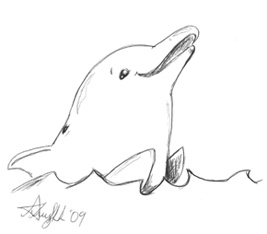Writing Poems
What’s the difference between concrete and cement? Find out by reading Don’t Eat Concrete
The great thing about poetry is that there is no right or wrong way to do it. But a good poem is one that can be shared with others to discover they like it too.
 Here’s Celia’s Definition of Poetry: “A poem is a way of writing or reciting words that have been carefully collected and combined so they have a sense of rhythm. They provide a heartbeat which brings the poem to life. Chosen words dance, rather than walk. They parade our ideas, emotions and points of view in ways that are different from normal speech or writing (which we call Prose). A poem is a group of words that has some kind of pattern. Poetry endeavours to use the best words in the best order, using techniques such as alliteration, repetition and vivid description – from metaphors, similes and onomatopoeia. If Prose is likened to noise, then Poetry is like music.”
Here’s Celia’s Definition of Poetry: “A poem is a way of writing or reciting words that have been carefully collected and combined so they have a sense of rhythm. They provide a heartbeat which brings the poem to life. Chosen words dance, rather than walk. They parade our ideas, emotions and points of view in ways that are different from normal speech or writing (which we call Prose). A poem is a group of words that has some kind of pattern. Poetry endeavours to use the best words in the best order, using techniques such as alliteration, repetition and vivid description – from metaphors, similes and onomatopoeia. If Prose is likened to noise, then Poetry is like music.”
A poem doesn’t need to rhyme, it can be free verse or other poetry type. However, to be considered for publication on this website, we prefer rhyming verse about science, nature or the environment. See how Celia writes poems in the video A Day In The Life of a Proud Published Poet by Suzie Cray.
Send your poem to feedback@sciencerhymes.com.au. If you are a student, please include your school and grade year.
YOUR POEMS are now featured in the “Your Science Poems” blog posts.
One way to improve your own poetry writing is by reading other people’s poems – to find which styles and topics you are inspired to write about.
Since February 2017, Science Rhymes has been sharing poems on the Australian Children’s Poetry platform, where you can subscribe to receive a Poem of The Day via email:
And here are five more favourite Science Rhymes!
| Do Dolphins Kiss? | Energy & Change | Sounds Sensational |
|---|---|---|
| Sounds on the move | Sound; water; pitch; echolocation; making sound | |

Do Dolphins Kiss? by Celia Berrell
The dolphins swimming in the sea
make clicks and squeaks quite frequently.
These sounds move fast through liquid’s layer
compared to noises in the air.
Their clicks and chirps we can’t translate
but that’s how they communicate.
Not all their whistles we can hear.
They’re pitched too high for human ears.
They also sent out sounds to mark
locations of the sharks at dark
by bouncing echoes in the black
and timing when they’re getting back.
Since dolphins have to hold their breath
when swimming in the ocean’s depth
their voices aren’t from air that flows.
Instead they’ve lips inside their nose!
Their happy squeaks and chatty clicks;
those chirpy whistles, pops and hiss
like sounds of children’s playground bliss
are made from just a dolphin’s kiss.
| Chocolate Box Planet | Earth & Beyond | Earthquake Explorers |
|---|---|---|
| Unearthing quakes | Earth; internal structure; core; mantle; crust | |
Chocolate Box Planet by Celia Berrell
Let’s hope this won’t come as a shock
but Earth’s not made of solid rock.
Instead it’s like those fancy chocs
you sometimes get inside a box.
The centre’s dense and very hot.
And hard just like a hazelnut.
It’s mostly made from iron ore.
We label it the Inner Core.
The Outer Core’s a liquid goo
like runny toffee soft to chew.
The iron’s melted here as well
but wouldn’t taste of caramel.
The Mantle is a bit bizarre.
A kind of squishy-tough nougat.
It’s sometimes liquid sometimes not.
We call it semi-solid rock.
And finally the chocolate coating. Thin
and crisp and kind of floating. Made
from rocky plates that thrust some
bumps upon our choccy’s Crust.
Although our World’s too big to eat
and wouldn’t taste much like a sweet
a nutty chocolate compares
with eating through Earth’s many layers.
| Don’t Eat Concrete | Natural & Processed Materials | What’s It Made Of |
|---|---|---|
| Minds on maps | Concrete; cement; properties; safety | |

Don’t Eat Concrete by Celia Berrell
I think we’ll make a concrete cake.
It doesn’t have to oven-bake.
It cooks itself and gets quite warm
when curing to its dry hard form.
We’ll need to scoop and stir and fold
ingredients in a mixing bowl.
Cement and sand and gravel make
the contents of a concrete cake.
Cement’s a powder, coloured grey
that’s made from, gypsum, lime and clay.
Just like a cake’s self raising flour
it gives our concrete sticking-power.
The sand’s a bit like sugar-grits
and gravel’s like the dried-fruit bits.
We’ll add some water to the mix
and make a sludge that slops and sticks.
When poured into a frame of wood
our concrete keeps the shape it should.
We’ll pat it flat and water it
and let it cook and dry and set.
Once cured, that slab is hard and tough
so don’t go falling on the stuff.
Our teeth and concrete shouldn’t meet.
It’s not a cake for us to eat!
| Bash And Flash | Energy & Change | On the Move |
|---|---|---|
| Toys that move | Ball; bouncing; rolling | |

Click to play Bash and Flash.




